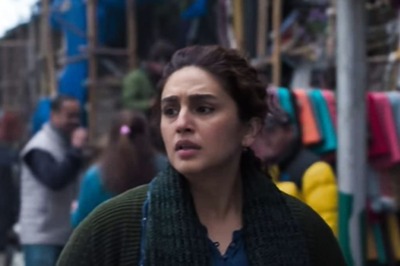
views
The BJP’s hat-trick in the Hindi belt arguably cements its status as ‘the system-defining party’ in a One-Party Dominant (OPD) scenario. What does this mean for the parties pushed to the margins, and how much pressure can they exert on the saffron party in 2024?
It’s not just that the BJP won all three states. The sheer extent of victory is surprising. In Madhya Pradesh, it achieved a record 48.6 per cent vote share in the face of almost 20 years of anti-incumbency, exceeding the Congress’ winning vote share in 2018 by 8 per cent. The Congress was not expected to face anti-incumbency in Chhattisgarh and Rajasthan. But in Chhattisgarh, the BJP cruised to an all-time high vote share of 46 per cent, inflicting a crushing defeat.
The fact that a Congress victory was seen as a foregone conclusion makes it even more impressive. In Rajasthan, the Congress vote share remained more or less static, but the BJP surged ahead with a healthy swing of 3.7 per cent. Even in Telangana, where the BJP is not a force, it doubled its vote share to win eight seats.
Political analysts who had predicted that the BJP’s dominance was fragile because its footprint and vote share were not large enough and the Opposition not fragmented enough, will have to think again. The BJP iteration of the OPD system in this, the fourth phase of India’s party system, may be different from the old Congress one, but is no less valid.
First, the Opposition is disunited, regardless of the INDIA optics, underscoring the unipolarity of Indian politics. The alliance partners, cold-shouldered by the Congress in the assembly elections, lost no time in pointing fingers at the GOP (once grand old party) after the results came in. The JD(U), which is the prime mover, is now pitching for the pole position in INDIA. Indeed, the jubilation of the BJP is matched only by that of some of the Congress’ allies! The difference is that the Opposition today, unlike that during the Congress hegemony, has no counter-narrative to offer. Modi’s development mantra, bundled with nationalism and Hindu pride, won the day against the Congress ‘revdis’ and promises of a caste census.
Second, the assembly election results confirm the trends seen in 2019, which argue a march towards hegemony. The margins of victory are bigger. In MP, some 20 BJP candidates won with margins of more than 50,000, which is huge in an assembly election.
Also, while the number of small parties has increased, their effective vote share has declined. In MP, the combined vote share of the BJP and Congress has increased by around 7 per cent, while that of the BSP and SP has decreased by 2.5 per cent. These results indicate less fragmentation in the political system than the number of parties (13 were in the fray) would argue. The Aam Aadmi Party, for instance, came a cropper in all three Hindi belt states, polling fewer votes than NOTA (none of the above).
Third, the depth of the BJP’s influence in its strongholds appears to make up for its geographical limitations. Apart from caste and Hindu consolidation, it has added new voting groups like women, the youth and the poor (labharthi and would-be labharthis) who repose their faith in Modi’s welfare schemes and development-oriented governance.
Conventional wisdom has it that the BJP’s continuing dominance would be eroded by three factors: a strong secular pre-poll alliance, increased dependence on regional parties and finally, the absence of the Modi factor. The assembly elections indicate that the so-called secular alliance is a non-starter, at least so far. Nor is the BJP more dependent on its allies, as it consistently has a better strike rate, as was evident in the 2021 Assam polls and the 2020 Bihar elections.
That brings us to the Modi factor, which played a crucial role in the recent assembly elections in the absence of a chief ministerial ‘face’. Post-2019 surveys clearly indicated that a majority of those who voted for BJP did so because they wanted Modi as their PM. But the ideological shift in favour of the BJP – which now stands for development, welfare and Hindu nationalism – is too well-established to revert to a Mandal scenario. As political scientist Rahul Verma wrote, “It is unlikely that the departure of Modi would represent an abrupt end to the BJP-dominant system.”
The Congress system was challenged externally, by charismatic figures like Charan Singh, Chandrashekhar, Atal Bihari Vajpayee and so on. Currently, no such challenge exists. Rahul Gandhi’s over-hyped ‘Bharat Jodo Yatra’, far from denting the BJP’s deep support base in MP, could not prevent further expansion. Unless the Congress submits to an effective pre-poll coalition, with a credible figure at the helm, 2024 will be a repeat of the assembly elections: Modi all the way.
Bhavdeep Kang is a freelance writer and author of ‘Gurus: Stories of India’s Leading Babas’ and ‘Just Transferred: The Untold Story of Ashok Khemka’. A journalist since 1986, she has written extensively on national politics. Views expressed in the above piece are personal and solely that of the author. They do not necessarily reflect News18’s views.




















Comments
0 comment